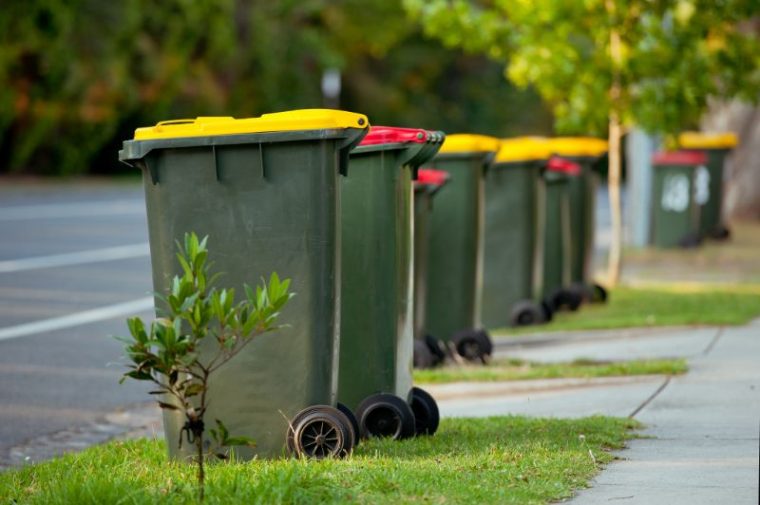How does recycling help the environment and what goes into the yellow recycling bin? Put simply, recycling reduces the amount of waste going to landfills. Recycling also saves energy, as it minimises the need for extracting raw materials. This helps reduce greenhouse gas emissions, one of the key factors leading to climate change.
There’s no doubt that recycling is important. It’s likely your local council has scheduled weekly or fortnightly collections for your yellow recycling bin, and you might pride yourself on being a conscious recycler. But there is often confusion around what should and shouldn’t go in the yellow lid bins, and some common mistakes are reducing the positive impact of recycling.
Recycling is easy once you know the ins and outs. Here’s a quick guide to taking some of the guesswork out of your yellow recycling bin.
YES – Put it in the Yellow Bin!
The following items can (and should!) go in your yellow bin:
- Aluminium and steel cans – drink and pet food cans, washed first
- Plastic containers and bottles – rigid plastics such as milk bottles or ice cream/yoghurt containers. See the note below about Containers for Change for an alternative way of recycling drink bottles
- Paper – newspapers, magazines, office paper
- Cardboard – milk cartons, egg cartons, cereal boxes, the inner roll of toilet paper
- Glass – Glass bottles such as wine and beer bottles, sauce jars
Points to note
For every item you put into your recycling bin, make sure:
- You have removed all lids from bottles and jars. Metal lids (e.g. from glass jars or beer bottles) can go in the yellow bin, but plastic lids can’t
- Bottles, jars and similar have been rinsed (and dried) to remove food or drink residue
- Cardboard boxes should be flattened
- Items should be placed loosely in your bin – i.e., not in bags
If in doubt, leave it out. It only takes one incorrect item to contaminate the whole collection, leading to more items being sent unnecessarily to landfills.
Common Mistakes
Even if we all have the best intentions when it comes to using our yellow recycling bin, there are some common mistakes that many people make regarding their yellow bin. Here are some of the things that can’t go in your yellow topped bin:
- Soft plastics including plastic bags
- Ceramics, such as plates or mugs
- Aerosols
- Shredded paper
- Batteries
- General household waste such as food scraps
- Grass clippings or garden waste
- Coffee cups
- Clothes or textiles
- Polystyrene
Be aware of contaminants. Not rinsing food containers is one of the biggest mistakes people make regarding their yellow bins, which can lead to contamination of the whole load, which is then all sent to landfills. Other contaminants include greasy pizza boxes, nappies, used tissues or paper towels.
Other Recycling Initiatives
The scope of the yellow recycling bin doesn’t cover everything. Here are some other recycling initiatives you should become involved in:
Containers for change
This is a particularly attractive initiative for recycling, as it offers cash in exchange for your items. When you recycle with Containers for Change, you get a 10 cent refund on every eligible drink container you drop off. Check your drink containers for the ‘10c’ mark on the packaging, signalling that it will be accepted at Containers for Change. Most aluminium, plastic, glass and paperboard drink containers between 150ml and 3L will be accepted.
You can choose to take the cash, get it sent directly to a bank account, or donate it. This is a great way of getting the kids involved in recycling and reducing recyclable items ending up in landfills.
REDcycle
This is one of the most convenient recycling initiatives in Australia and a great way of keeping plastic bags and packaging out of landfills. Many items of plastic food packaging now have the REDcycle logo on the back, letting you know it will be accepted in the REDcycle program. Simply bundle up all your soft plastics and acceptable food packages and drop them off at a collection point. Jump online to find your local collection point if you’re unsure – most Woolworths and Coles stores have one at the front of the store.
While checking the packaging for the REDcycle symbol is your first step, here’s a quick list of some items that REDcycle will accept:
Fresh produce bags
- Bread bags (without the tie)
- Plastic wrap from newspapers and magazines
- Plastic Australia Post satchels
- Plastic carrier bags
- Plastic wrap e.g. outside of toilet paper or nappy packs
- Squeeze pouches with the lid on e.g. yoghurt or baby food
- Bubble wrap
- Chocolate, lolly and snack wrappers
Make sure your plastic is dry and as empty as possible before depositing it in the collection bins.
Other
If you have a lot of recyclable items and you want to ensure they are reused in some capacity, reach out to local kindergartens and daycare centres. They are often on the hunt for items they can use for arts and crafts such as egg cartons, cereal boxes or glass jars.
If you feel like your community should be doing more to recycle, reach out to your local council and get involved in initiatives fighting for change.
Other Waste Disposal Options
We all want to do the right thing when it comes to waste removal, and it can feel overwhelming to figure out which is the best, most environmentally-friendly option.
We’re here to help. Here at Kwik Skips, we ensure we recycle appropriate materials where we can. For waste disposal that goes beyond the weekly collection of your small household skip bins, get in touch with us. We offer competitive prices on Perth skip bins and can help organise a skip bin for your home or workplace, and ensure that the waste is disposed of in the appropriate way.
